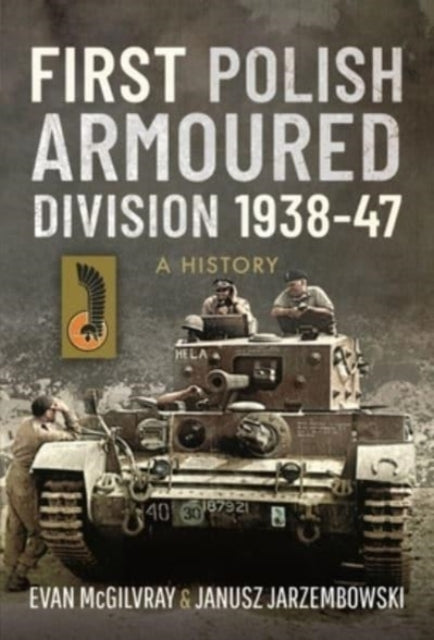First Polish Armoured Division 1938-47 : A History
Usually shipped within 24 hours
UK deliveries from £5.95
Delivery & Returns
Delivery & Returns
We use the Royal Mail, DHL Express or UPS for our customers. For UK addresses, deliveries under 10kg are a standard £4.95 via Royal Mail Tracked 48 Service. For orders over 10kg and overseas customers, postage is calculated for you at checkout once you have entered your postal address. This price, does not include any potential custom charges that may apply, depending on the product or destination, as every country has very different import duties / taxes. Online exclusive products (such as trainers) will be delivered to you directly from the printer, separate from other items in your order, but your postage fee covers ALL items in your order.
If you are unhappy with your purchase, please email shop@tankmuseum.org within fourteen (14) working days of receiving your goods, and return it to us at the address below, in its original condition, unopened (with any seals and shrink-wrap intact) and we will issue you a full refund or replace it. Goods must be returned at your own cost. If the item is faulty, you do not need to return it, we will send you a replacement free of charge.
Description
Description
By Evan McGilvray
Hardback
The First Polish Armoured Division was formed in Scotland in February 1942 from Polish exiles who had escaped first Poland and then France. Its commander, Stanislaw Maczek, and many of its men had previously served in Polish 10th Motorized Cavalry Brigade (10 BKS), which had taken part in the Polish invasion of Czechoslovakia in 1938 and given a good account of itself in the defence of Poland against German and Soviet invasion of 1939\. Under Maczek's leadership the division was trained and equipped along British lines in preparation for the invasion of France.
Attached to 1st Canadian Army, the division was sent to Normandy in late July 1944\. It suffered heavily during Operation Totalize but went on to play a crucial role in preventing an orderly German withdrawal from the Falaise Pocket by its stand at Hill 262\. They then played their part in the advance across Western Europe and into Germany.
This detailed history, supported by dozens of archive photos, concludes by looking at the often-poor treatment of Maczek and his men after the war.
![First Polish Armoured Division 1938-47 : A History Book [variant_option4]](http://tankmuseumshop.org/cdn/shop/files/9781526724151.jpg?v=1731074544&width=1214)

![First Polish Armoured Division 1938-47 : A History Book [variant_option4]](http://tankmuseumshop.org/cdn/shop/files/9781526724151.jpg?v=1731074544&width=88)
![Tank Museum Playing Cards Game [variant_option4]](http://tankmuseumshop.org/cdn/shop/files/ProductShoot_10_10_2025035.jpg?v=1760358498&width=176)
![Tank Museum Wrapping Paper - Two sheet pack Wrapping Paper [variant_option4]](http://tankmuseumshop.org/cdn/shop/products/Wrapp_Paper_All.jpg?v=1748337915&width=176)
![First Polish Armoured Division 1938-47 : A History Book [variant_option4]](http://tankmuseumshop.org/cdn/shop/files/9781526724151.jpg?v=1731074544&width=640)



